-
 Bitcoin
Bitcoin $101,898.5005
-0.75% -
 Ethereum
Ethereum $2,258.1125
-1.07% -
 Tether USDt
Tether USDt $1.0004
0.01% -
 XRP
XRP $2.0178
-2.93% -
 BNB
BNB $624.0243
-1.53% -
 Solana
Solana $134.3298
-0.90% -
 USDC
USDC $0.9999
0.01% -
 TRON
TRON $0.2675
-2.05% -
 Dogecoin
Dogecoin $0.1538
-1.96% -
 Cardano
Cardano $0.5482
-1.11% -
 Hyperliquid
Hyperliquid $35.5636
5.45% -
 Bitcoin Cash
Bitcoin Cash $453.4902
-1.66% -
 Sui
Sui $2.5134
-2.97% -
 UNUS SED LEO
UNUS SED LEO $9.1292
1.77% -
 Chainlink
Chainlink $11.8457
-1.60% -
 Stellar
Stellar $0.2312
-2.73% -
 Avalanche
Avalanche $16.9721
0.29% -
 Toncoin
Toncoin $2.7549
-3.82% -
 Shiba Inu
Shiba Inu $0.0...01081
-1.10% -
 Litecoin
Litecoin $80.8250
-0.71% -
 Hedera
Hedera $0.1374
0.21% -
 Monero
Monero $305.4827
-2.36% -
 Ethena USDe
Ethena USDe $1.0006
0.00% -
 Dai
Dai $1.0000
-0.01% -
 Polkadot
Polkadot $3.2085
-3.12% -
 Bitget Token
Bitget Token $4.0845
-3.13% -
 Uniswap
Uniswap $6.3353
-1.63% -
 Pi
Pi $0.5085
-0.70% -
 Pepe
Pepe $0.0...08913
-3.82% -
 Aave
Aave $232.7090
-0.58%
Is the MACD indicator easy to use in futures? What is the difference with the stock market usage?
The MACD indicator helps traders gauge momentum and trend reversals in crypto futures, using the MACD line, signal line, and histogram for effective trading strategies.
May 24, 2025 at 03:21 am
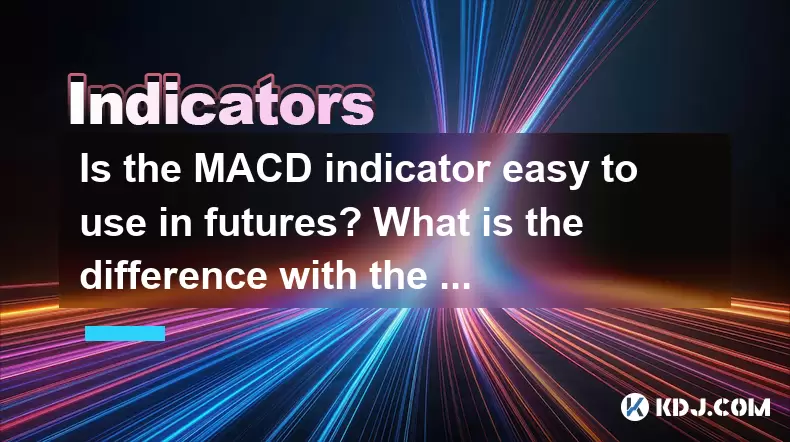
Introduction to the MACD Indicator
The MACD (Moving Average Convergence Divergence) indicator is a popular tool used by traders to gauge the momentum and potential trend reversals in financial markets, including cryptocurrency futures. It is based on the difference between two moving averages of an asset's price. The MACD is composed of the MACD line, the signal line, and the histogram. Understanding how to use this indicator effectively can significantly enhance your trading strategy in the futures market.
How to Use the MACD Indicator in Cryptocurrency Futures
Using the MACD indicator in cryptocurrency futures involves several steps and considerations. Here is a detailed guide on how to apply the MACD in your futures trading:
Open Your Trading Platform: Start by opening your preferred cryptocurrency trading platform that supports futures trading and offers the MACD indicator.
Locate the MACD Indicator: Navigate to the indicators section of your platform. You will find the MACD listed among other technical analysis tools.
Add the MACD to Your Chart: Click on the MACD and add it to your price chart. Most platforms will automatically set the default parameters, which are typically 12, 26, and 9 periods for the fast EMA, slow EMA, and signal line, respectively.
Analyze the MACD Line and Signal Line: The MACD line is calculated by subtracting the 26-period EMA from the 12-period EMA. The signal line is a 9-period EMA of the MACD line. When the MACD line crosses above the signal line, it is considered a bullish signal, suggesting that it might be a good time to buy. Conversely, when the MACD line crosses below the signal line, it is a bearish signal, indicating a potential sell opportunity.
Evaluate the Histogram: The histogram represents the difference between the MACD line and the signal line. A growing histogram indicates increasing momentum in the current trend, while a shrinking histogram suggests weakening momentum.
Combine with Other Indicators: For more reliable signals, consider using the MACD in conjunction with other indicators such as the RSI (Relative Strength Index) or Bollinger Bands.
Differences Between Using MACD in Futures and Stock Markets
While the core principles of using the MACD indicator remain the same, there are notable differences when applying it to cryptocurrency futures versus traditional stock markets:
Volatility: Cryptocurrency markets are known for their high volatility compared to stock markets. This can lead to more frequent and pronounced MACD signals. Traders need to be cautious and might need to adjust the sensitivity of the MACD settings to better suit the volatile nature of crypto futures.
Trading Hours: Cryptocurrency markets operate 24/7, whereas stock markets have specific trading hours. This continuous trading can result in more opportunities for MACD signals but also requires constant monitoring.
Leverage: Futures trading often involves leverage, which can amplify both gains and losses. The MACD can help identify entry and exit points, but the use of leverage means that these signals must be acted upon with greater precision and risk management.
Market Sentiment: The crypto market is heavily influenced by news, social media, and other external factors. These can cause rapid shifts in market sentiment, affecting the reliability of MACD signals more than in the stock market.
Practical Example of Using MACD in Crypto Futures
To illustrate how the MACD can be used in crypto futures, let's consider a hypothetical trading scenario:
Scenario: You are monitoring the Bitcoin futures market and notice that the MACD line has crossed above the signal line, and the histogram is expanding.
Action: This is a bullish signal, suggesting that it might be a good time to enter a long position. You decide to buy Bitcoin futures contracts.
Monitoring: You continue to monitor the MACD. If the MACD line crosses below the signal line and the histogram begins to contract, this could be a signal to exit your position to lock in profits or minimize losses.
Common Pitfalls and How to Avoid Them
While the MACD is a powerful tool, there are common pitfalls that traders should be aware of:
False Signals: Due to the high volatility in crypto markets, false signals can be more common. To mitigate this, consider using longer time frames for your MACD analysis or combining the MACD with other indicators to confirm signals.
Over-reliance on MACD: Relying solely on the MACD can lead to missed opportunities or incorrect trades. Always use it in conjunction with other analysis tools and market knowledge.
Ignoring Market Context: The MACD does not account for broader market trends or external factors. Always consider the overall market context before making trading decisions based on MACD signals.
Tips for Optimizing MACD Usage in Crypto Futures
To get the most out of the MACD indicator in crypto futures, consider the following tips:
Adjust Settings: Experiment with different settings for the MACD to find what works best for the specific crypto futures you are trading. For highly volatile assets, you might want to use shorter periods to capture quick trends.
Backtesting: Before using the MACD in live trading, backtest your strategy on historical data to see how it would have performed. This can help you fine-tune your approach.
Risk Management: Always use proper risk management techniques, such as setting stop-loss orders, when trading based on MACD signals, especially given the high leverage often used in futures trading.
Frequently Asked Questions
Q1: Can the MACD be used for short-term trading in crypto futures?
Yes, the MACD can be effectively used for short-term trading in crypto futures. By adjusting the settings to shorter periods, traders can capture quick trends and momentum shifts. However, due to the increased volatility, it's crucial to combine the MACD with other indicators and maintain strict risk management.
Q2: Is it necessary to use the default MACD settings in crypto futures trading?
No, it's not necessary to use the default settings. Traders often adjust the MACD settings to better suit the specific asset and market conditions they are trading. For instance, in highly volatile crypto markets, shorter periods might be more effective.
Q3: How does the MACD help with risk management in crypto futures?
The MACD can assist with risk management by providing clear signals for entry and exit points. Traders can set stop-loss orders based on MACD signals to minimize potential losses. Additionally, the histogram can help gauge the strength of a trend, allowing traders to adjust their position sizes accordingly.
Q4: Can the MACD be used alone for trading crypto futures?
While the MACD is a powerful tool, it is generally recommended to use it in conjunction with other indicators and market analysis methods. Using the MACD alone can lead to false signals, especially in the highly volatile crypto futures market. Combining it with tools like RSI, Bollinger Bands, or even fundamental analysis can provide a more comprehensive trading strategy.
Disclaimer:info@kdj.com
The information provided is not trading advice. kdj.com does not assume any responsibility for any investments made based on the information provided in this article. Cryptocurrencies are highly volatile and it is highly recommended that you invest with caution after thorough research!
If you believe that the content used on this website infringes your copyright, please contact us immediately (info@kdj.com) and we will delete it promptly.
- BNB Price Check: Stablecoin Surge vs. Prediction Rollercoaster
- 2025-06-23 14:25:12
- Metaplanet's Bitcoin Bonanza: Holdings Skyrocket Amidst Market Swings
- 2025-06-23 14:25:12
- Global Meltdown, Investors, and Safe Havens: Navigating the Storm
- 2025-06-23 14:30:12
- NFT Sales Snapshot: Guild of Heroes, Polygon, and the Market's Shifting Sands
- 2025-06-23 15:25:12
- AVAX Support Holds, Eyes Potential Surge: What's Next?
- 2025-06-23 15:11:16
- Cointelegraph Under Fire: Exploits, Phishing, and the Crypto Media Minefield
- 2025-06-23 15:11:16
Related knowledge

How to read the sideways consolidation after the bottom volume and long positive line?
Jun 23,2025 at 02:28pm
Understanding the Sideways ConsolidationWhen analyzing cryptocurrency charts, sidewards consolidation refers to a phase where prices move within a narrow range without a clear upward or downward trend. This pattern often appears after significant price movements, such as a sharp increase followed by a period of equilibrium between buyers and sellers. In...
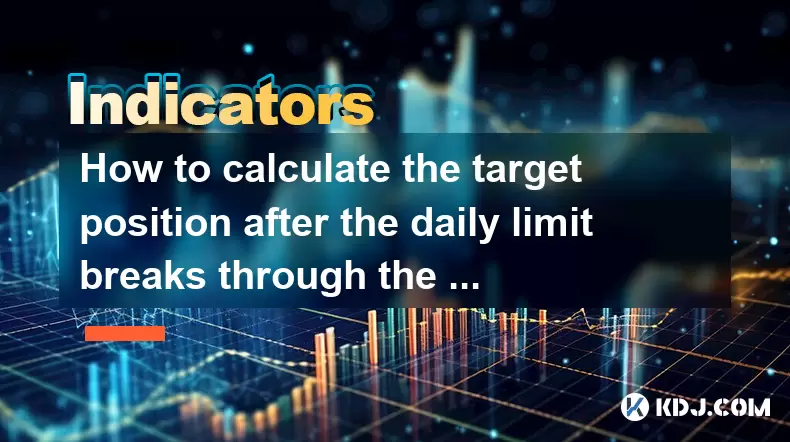
How to calculate the target position after the daily limit breaks through the previous high?
Jun 23,2025 at 02:57pm
Understanding the Daily Limit BreakthroughIn cryptocurrency trading, a daily limit typically refers to the maximum price movement allowed within a single trading day on certain exchanges. When this limit is breached, especially when it surpasses the previous high, traders often seek to calculate the target position or expected price movement following s...
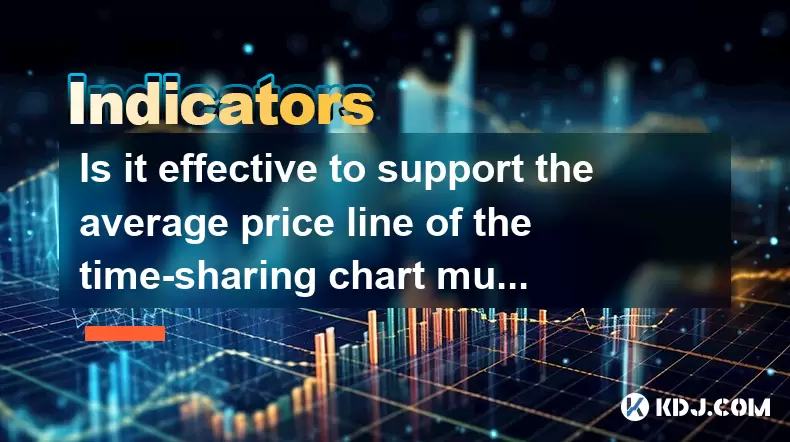
Is it effective to support the average price line of the time-sharing chart multiple times?
Jun 23,2025 at 01:36pm
Understanding the Average Price Line in Time-Sharing ChartsIn cryptocurrency trading, time-sharing charts refer to real-time price charts that display price movements over short intervals, often within a single trading day. Within these charts, the average price line, also known as the Volume Weighted Average Price (VWAP), is a commonly used technical i...
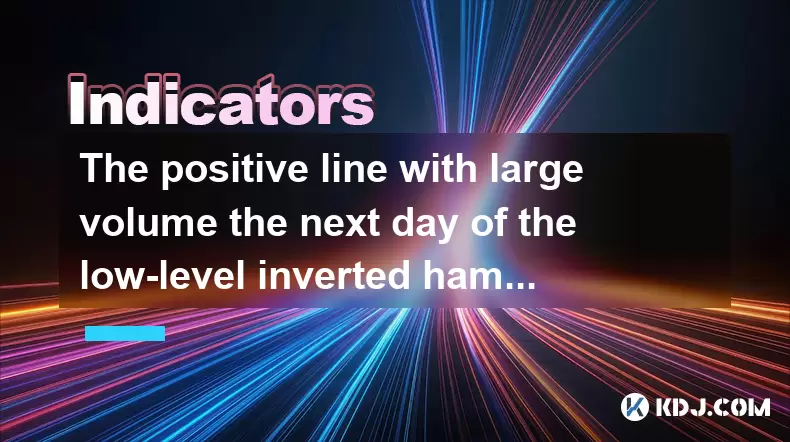
The positive line with large volume the next day of the low-level inverted hammer line confirms the reversal?
Jun 23,2025 at 01:21pm
Understanding the Low-Level Inverted Hammer LineThe inverted hammer line is a single candlestick pattern that typically appears at the end of a downtrend. It has a small real body near the bottom of the trading range and a long upper shadow, indicating that bulls attempted to push prices higher but were met with selling pressure. When this pattern forms...
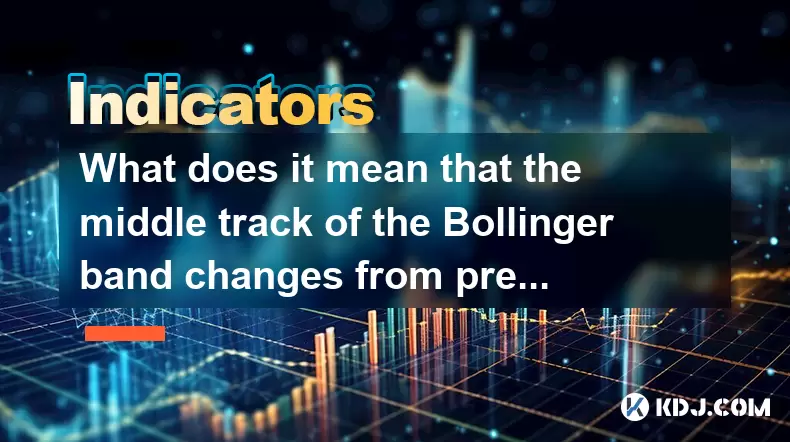
What does it mean that the middle track of the Bollinger band changes from pressure to support?
Jun 23,2025 at 03:01pm
Understanding the Bollinger Band StructureThe Bollinger Bands are a technical analysis tool used in cryptocurrency trading, developed by John Bollinger. They consist of three lines: a simple moving average (SMA) in the middle and two standard deviation bands above and below it. The middle track is typically set at 20 periods and serves as a baseline for...
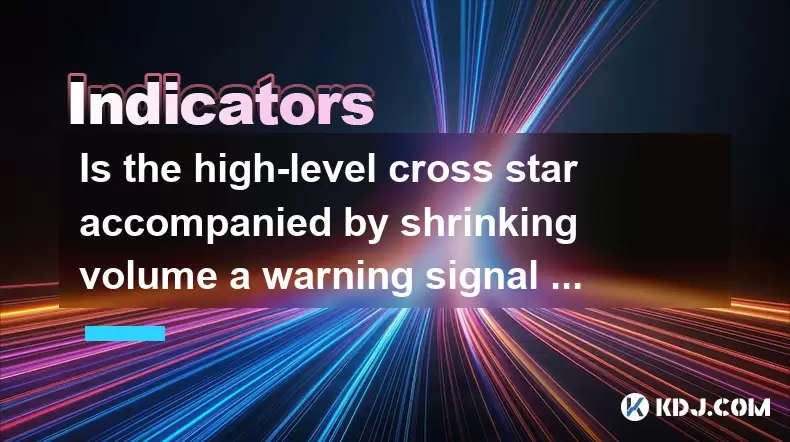
Is the high-level cross star accompanied by shrinking volume a warning signal of peaking?
Jun 23,2025 at 01:28pm
Understanding High-Level Cross Star PatternsIn the world of cryptocurrency trading, candlestick patterns are essential tools for technical analysis. One such pattern is the high-level cross star, which appears as a doji or near-doji candle at a significant resistance level. This pattern often indicates indecision in the market and can be interpreted as ...

How to read the sideways consolidation after the bottom volume and long positive line?
Jun 23,2025 at 02:28pm
Understanding the Sideways ConsolidationWhen analyzing cryptocurrency charts, sidewards consolidation refers to a phase where prices move within a narrow range without a clear upward or downward trend. This pattern often appears after significant price movements, such as a sharp increase followed by a period of equilibrium between buyers and sellers. In...

How to calculate the target position after the daily limit breaks through the previous high?
Jun 23,2025 at 02:57pm
Understanding the Daily Limit BreakthroughIn cryptocurrency trading, a daily limit typically refers to the maximum price movement allowed within a single trading day on certain exchanges. When this limit is breached, especially when it surpasses the previous high, traders often seek to calculate the target position or expected price movement following s...

Is it effective to support the average price line of the time-sharing chart multiple times?
Jun 23,2025 at 01:36pm
Understanding the Average Price Line in Time-Sharing ChartsIn cryptocurrency trading, time-sharing charts refer to real-time price charts that display price movements over short intervals, often within a single trading day. Within these charts, the average price line, also known as the Volume Weighted Average Price (VWAP), is a commonly used technical i...

The positive line with large volume the next day of the low-level inverted hammer line confirms the reversal?
Jun 23,2025 at 01:21pm
Understanding the Low-Level Inverted Hammer LineThe inverted hammer line is a single candlestick pattern that typically appears at the end of a downtrend. It has a small real body near the bottom of the trading range and a long upper shadow, indicating that bulls attempted to push prices higher but were met with selling pressure. When this pattern forms...

What does it mean that the middle track of the Bollinger band changes from pressure to support?
Jun 23,2025 at 03:01pm
Understanding the Bollinger Band StructureThe Bollinger Bands are a technical analysis tool used in cryptocurrency trading, developed by John Bollinger. They consist of three lines: a simple moving average (SMA) in the middle and two standard deviation bands above and below it. The middle track is typically set at 20 periods and serves as a baseline for...

Is the high-level cross star accompanied by shrinking volume a warning signal of peaking?
Jun 23,2025 at 01:28pm
Understanding High-Level Cross Star PatternsIn the world of cryptocurrency trading, candlestick patterns are essential tools for technical analysis. One such pattern is the high-level cross star, which appears as a doji or near-doji candle at a significant resistance level. This pattern often indicates indecision in the market and can be interpreted as ...
See all articles
























































































